Foam and poly flies
{{start}}
Flies that incorporate closed cell foam or closed cell polypropylene components have their place in almost every type of fishery and whilst most are designed as floating flies there are a few that incorporate these floating components that are designed for fishing on sinking lines.
{{end}}
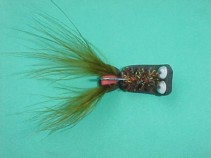
{{+1}}Wiggle frog – Chatto’s original{{-1}}
{{start}}
You can fish this fly on an intermediate or faster sinking line but my preference is to fish it on a floating line so that it swims just below the surface. On a floating line the best technique for fishing the fly is to give it one or two short strips and then rest it for a moment whilst it comes back to the surface. Rest it there for a few more seconds and then repeat the process.{{end}}
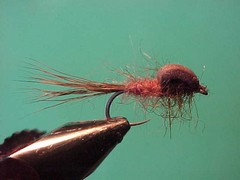
{{+1}}Floating nymph{{-1}}
{{start}}
This nymph applies elements of each of these two principals of science. The materials are all as buoyant as possible. This includes the tail which is deer hair and of course "hollow' and the closed cell foam which has tiny bubbles of air trapped within its membrane. It also has a reasonable "foot print" made up of the tail, and teased out seals fur body and thorax. Seals further adds a further benefit to the fly in that with a couple of brisk false casts it easily sheds water.{{end}}
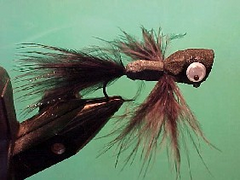
{{+1}}Guppy{{-1}}
{{start}}
. When bass are feeding on big insects like Cicadas and Hoppers that crash onto the water they also become susceptible to flies like poppers, and yes guppies, cast around their structure. At other times they just have a whack at them because there intruding into their domain. In either case the strikes and hook ups can be spectacular. They may be big in overall size but they do account for many a big bass.{{end}}
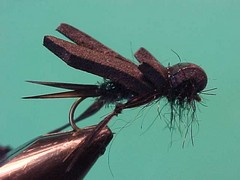
{{+1}}Foam cricket{{-1}}
{{start}}
If you fish fast water and need a very buoyant hopper or a buoyant fly to support a nymph try this one. Trout love crickets probably because that represent a pretty big serve of protein.{{end}}

{{+1}}Chatto’s Pusher – Brown bomber version{{-1}}
{{start}}
I published this fly back in 2011. It casts easily and displaces or pushes a lot of water when retrieved. That water displacement at the head creates currents along the body which activate the body materials. The black over gold version (ie gold bomber colours) is particularly good over weed beds and in dirtier water.{{end}}
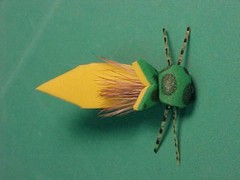
{{+1}}Bass foam hopper{{-1}}
{{start}}
When I converted my trout foam hopper for use as a bass and tropical fly fishing I added a sparkle chenille under-body and grossed it up dramatically so that it would withstand the aggressive nature of fish like Australian bass and tropical species such as mangrove jack.{{end}}

{{+1}}Foam hopper – Chatto original{{-1}}
{{start}}
If you fish fast water and need a very buoyant hopper or a buoyant fly to support a nymph try this one.{{end}}
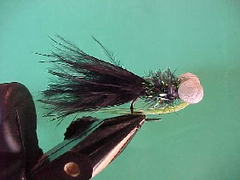
{{+1}}Bearded booby{{-1}}
{{start}}
One of the best search flies in slow moving or still deeper water using a sinking line ia a booby. As an alternative Boobies can also be fished as a semi-dry fly on the surface.{{end}}
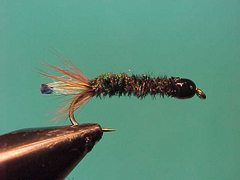
{{+1}}Bead head stick caddis{{-1}}
{{start}}
This is the lava of a Caddis fly (or Sedge) and is common from September through to December particularly in the flooded margins of lakes. The bead head version has been designed to be fished as an anchor fly when loch style fly fishing or as an anchor fly when fishing rivers.{{end}}
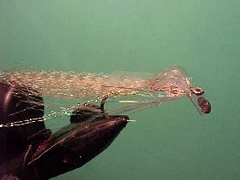
{{+1}}Wiggle smelt{{-1}}
{{start}}
At slow speeds of retrieve it does just what it is designed to do. It's light enough to cast on a fly rod and it swims with a true wiggling action. The down side of course is that if you strip too fast it does not have the weight to stay on track. As long as you keep that limitation in mind it certainly has its application.{{end}}













